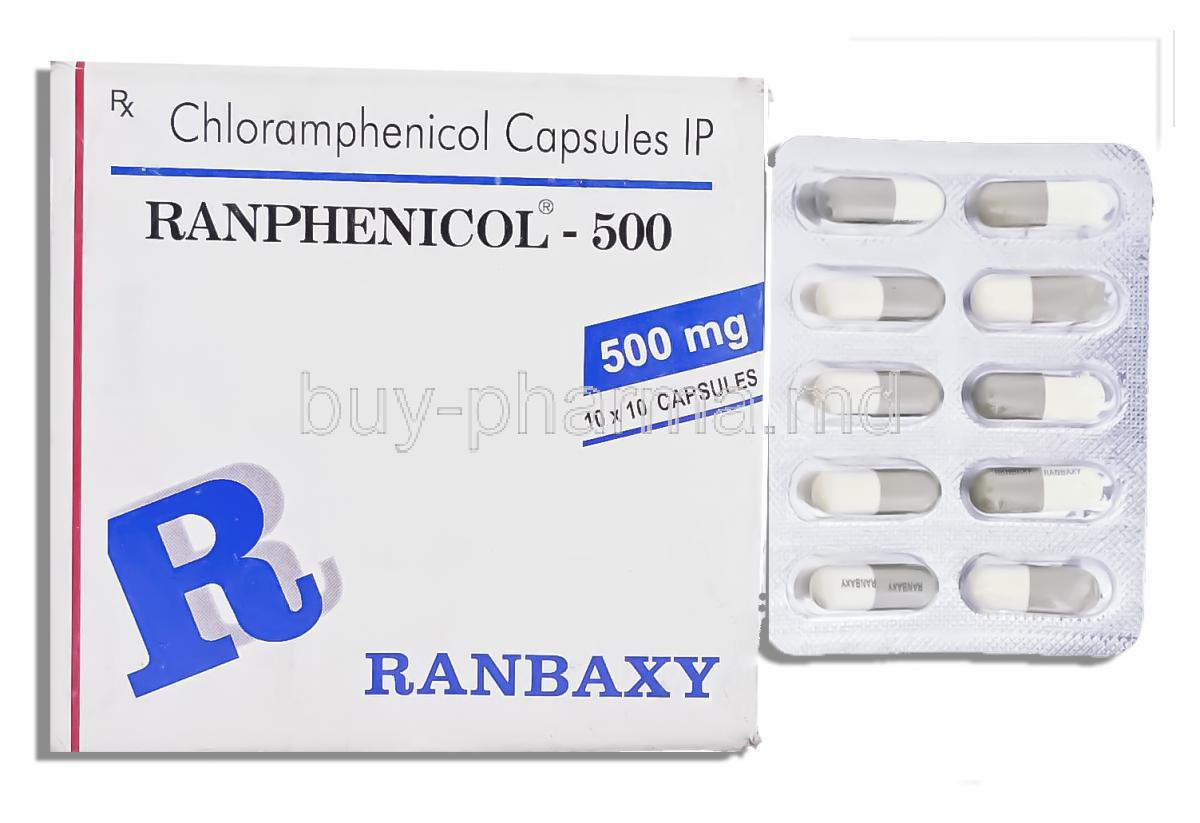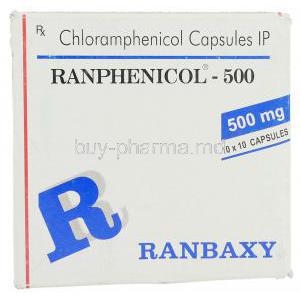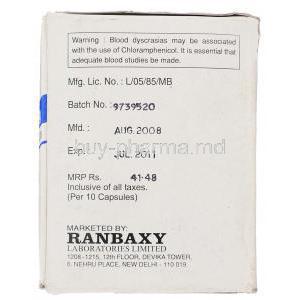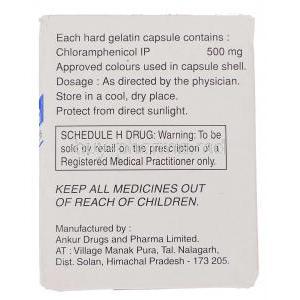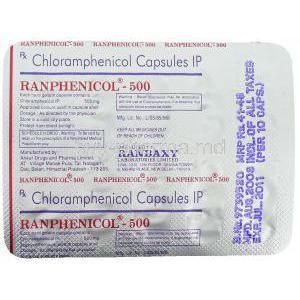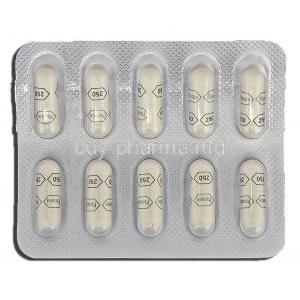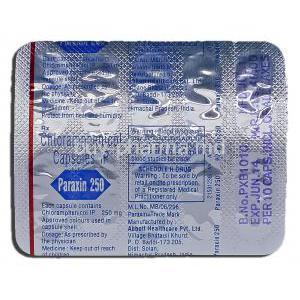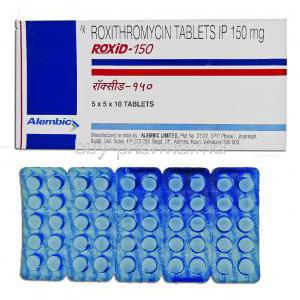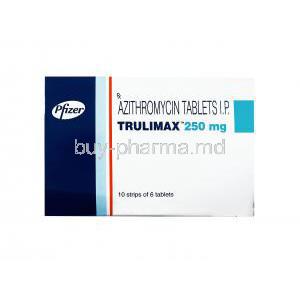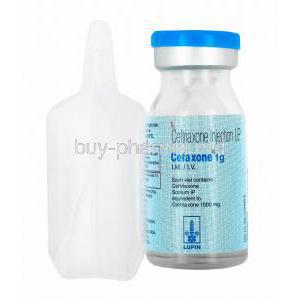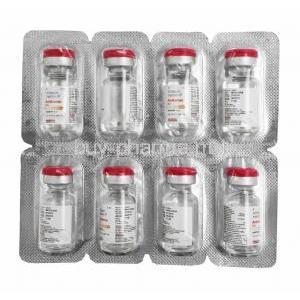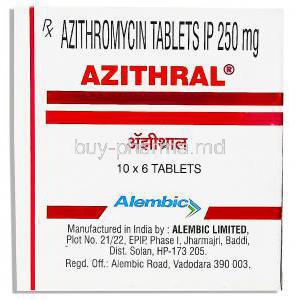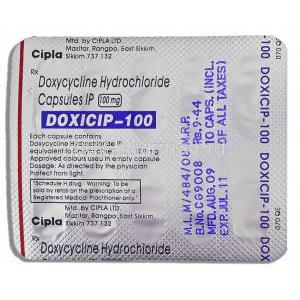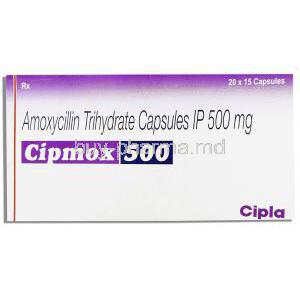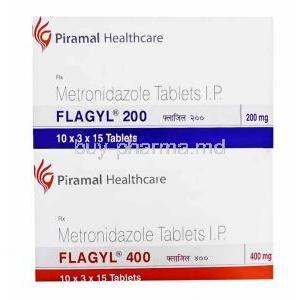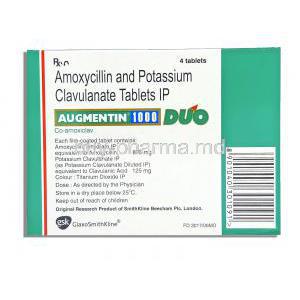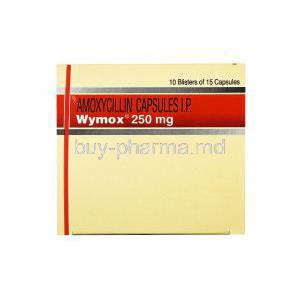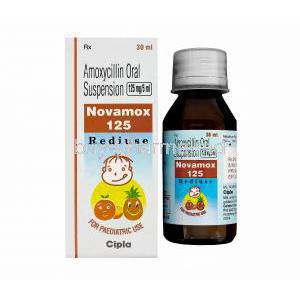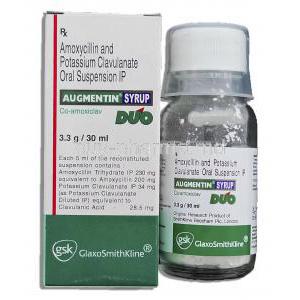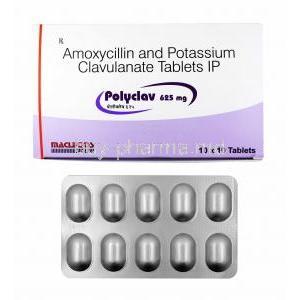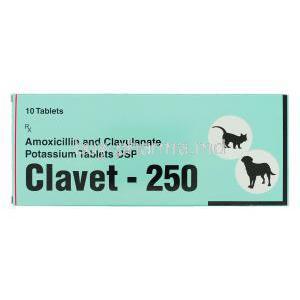Chloramphenicol
- Understanding Chloramphenicol
- Therapeutic Uses of Chloramphenicol
- Science Behind Chloramphenicol
- Is Chloramphenicol Bacteriostatic or Bactericidal?
- Dosage and Administration of Chloramphenicol
- Dosage and Administration of Chloramphenicol
- Chloramphenicol in Pregnancy
- Chloramphenicol Palmitate: A Versatile Formulation for Different Age Groups
- FAQs to Buy Chloramphenicol
- Buy Chloramphenicol: Comprehensive Guide on Usage and Safety
Understanding Chloramphenicol
Chloramphenicol is an antibiotic used for many years to treat different bacterial infections. It falls under the category of amphenicols, which are antibiotics derived from Streptomyces bacteria. This medication blocks protein production in bacteria, effectively halting their growth and reproduction. It can be taken orally, intravenously (IV), or as eye drops or ointment. The versatile nature of Chloramphenicol makes it a valuable tool in medicine, allowing it to effectively combat bacterial infections such as meningitis, typhoid fever, and certain eye infections.
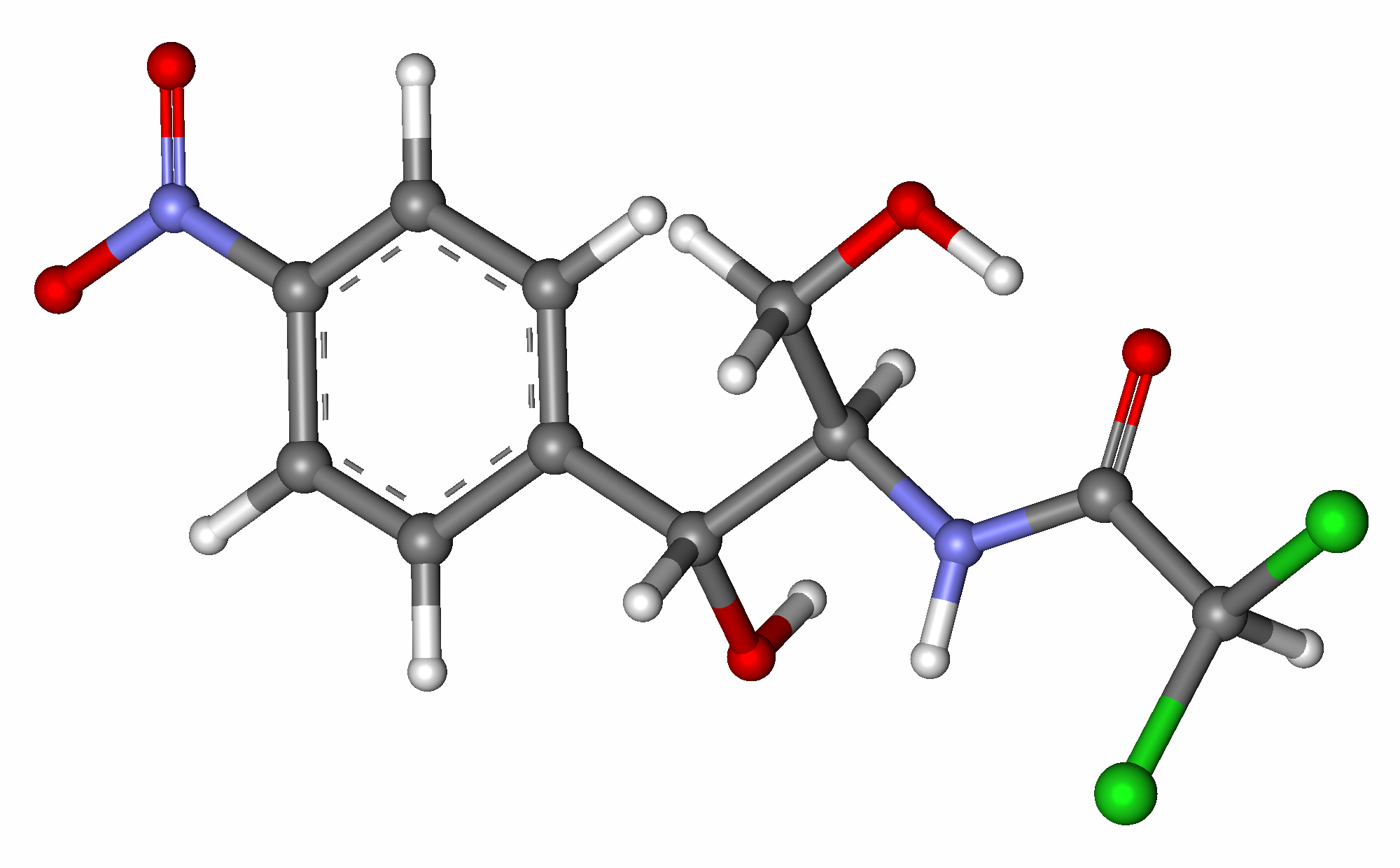
FDA Approval and Regulation
Chloramphenicol is authorized by the Food and Drug Administration (FDA) in the United States. Since it can have side effects and interact with medications, it is considered a prescription-only drug. It's crucial to consult healthcare before purchasing chloramphenicol.
Listed Forms:
Oral tablets and capsules, intravenous injections, topical eye drops, and ointments are forms of chloramphenicol. To ensure the utilization of this medication, it is essential to understand its therapeutic benefits, molecular activity, potential adverse effects, precautions, and proper dosing instructions. This comprehensive guide provides an overview of chloramphenicol, including its medicinal applications, how it works at a molecular level, possible side effects to be aware of, safety precautions to consider while using it, and recommended dosage guidelines. Before purchasing chloramphenicol, it is crucial to know its forms. Let's explore the uses of chloramphenicol and how they can benefit patients. Gain insights into this antibacterial medication through our comprehensive guide that covers its uses, side effects & dosage guidelines in the field of pharmacy and healthcare.
Therapeutic Uses of Chloramphenicol
Chloramphenicol is a versatile antibiotic that is renowned for its effectiveness in treating various bacterial infections 1. It finds utility in combating specific conditions such as eye infections, including bacterial conjunctivitis and ocular infections caused by susceptible bacteria 1. You can find information about its usage in treating eye infections through this thoroughly researched article 2. When it comes to the life-threatening infection known as meningitis, which targets the membranes surrounding the brain and spinal cord, chloramphenicol proves to be a formidable adversary against the responsible bacteria like Haemophilus influenzae, Streptococcus pneumoniae, and Neisseria meningitidis. Administered intravenously or intramuscularly, it plays a role in fighting this dangerous ailment 3. To learn more about how it aids in battling bacterial meningitis, refer to this source 3. Typhoid fever is another systemic infection caused by Salmonella typhi bacteria. If left untreated, it can lead to consequences and even prove fatal. In cases where other antibiotics fail due to resistance issues, doctors often prescribe injectable forms of chloramphenicol to effectively manage this condition 4. In addition to these applications, chloramphenicol may also be prescribed for other types of bacterial infections such as respiratory tract infections (RTIs), skin and soft tissue infections (SSTIs), intra-abdominal sepsis, urinary tract infections (UTIs), among others 1. It’s important to note that due to side effects and the risk of developing resistance against chloramphenicol, it should only be used when absolutely necessary. Before purchasing chloramphenicol, it is crucial to consult with a professional for proper guidance. The Centers for Disease Control and Prevention (CDC) offers information on the appropriate use of antibiotics which you can find here 5.
Here are some references that you can use to learn more about Chloramphenicol:
- Chloramphenicol - Wikipedia
- Chloramphenicol 1% Eye Ointment - 1mg
- Chloramphenicol - StatPearls - NCBI Bookshelf
- Typhoid Fever - Diagnosis & Treatment - Mayo Clinic
- Antibiotic Use in the United States.
Science Behind Chloramphenicol
Chloramphenicols ability to effectively treat infections is due to its distinctive way of working. In this section, we will explore the aspects of this potent antibiotic, specifically its ability to combat bacteria and influence protein synthesis.
Understanding Antibacterial Activity
Chloramphenicol is an antibiotic with a spectrum action against various types of bacteria. Its mechanism of action involves inhibiting the growth of bacteria rather than directly killing them, which makes it bacteriostatic instead of bactericidal. By stopping growth, this drug enables the body's immune system to fight and eliminate the infection effectively.
Chloramphenicol and Protein Synthesis
Chloramphenicol works by interfering with the production of proteins inside cells, which are essential for various cellular functions like replication and metabolism. By targeting protein synthesis, chloramphenicol disrupts these processes, preventing bacteria from growing or multiplying effectively.
- It does this by binding to the ribosomes 50S subunit, structures responsible for protein production within cells and hindering their function.
- One of chloramphenicol's actions is inhibiting the formation of peptide bonds between amino acids once it binds to ribosomes. This step is necessary for creating proteins so when chloramphenicol interferes with it incomplete or nonfunctional proteins are produced.
- Chloramphenicol is a potent antibiotic because it selectively targets bacterial ribosomes without affecting cells. This selectivity ensures treatment while minimizing harm to the patient. Understanding how chloramphenicol works on a level can help both patients and healthcare providers appreciate its role in fighting different bacterial infections and make informed decisions about its usage.
With years of use in combating diseases, exploring whether chloramphenicol acts as a bacteriostatic or bactericidal agent can provide further insight into its mechanism of action.
Is Chloramphenicol Bacteriostatic or Bactericidal?
Antibiotics are usually categorized as either bacteriostatic or bactericidal. It is essential to comprehend the distinction between these two types of medications to assess their efficacy for treating infections. This section will explore whether chloramphenicol functions as a bactericidal antibiotic.
Bacteriostatic vs. Bactericidal Antibiotics
Bacteriostatic antibiotics impede the growth and reproduction of bacteria without causing their death. These medications specifically target bacterial processes, such as protein synthesis or DNA replication, essential for survival and multiplication. In contrast, bactericidal antibiotics directly eliminate bacteria by disrupting cell walls or interfering with cellular functions.
The Mechanism of Action of Chloramphenicol
Chloramphenicol works by attaching itself to the ribosomes of bacteria and stopping them from making proteins. This is a process for bacterial growth and reproduction. By doing this, it prevents bacteria from multiplying, giving the system a better chance to eliminate the existing bacteria.
Classification: Bacteriostatic Antibiotic
Due to its mechanism of action, chloramphenicol is classified as an antibiotic, meaning it primarily stops bacterial growth instead of directly killing it. However, it is still an effective treatment for various bacterial infections when used correctly. Understanding the characteristics of antibiotics like chloramphenicol helps medical professionals make decisions about their use in treating specific illnesses. It also allows patients to know how these medications combat harmful bacteria within their bodies. It is essential to follow safety protocols and take precautions when using chloramphenicol to maximize its effectiveness and prevent unwanted outcomes. Chloramphenicol, an antibiotic that inhibits growth by targeting protein synthesis, offers an effective treatment option for various infections.
Dosage and Administration of Chloramphenicol
Determining the dosage and administration of Chloramphenicol is essential to guarantee its effectiveness in treating bacterial infections. This section will provide information on the recommended doses of chloramphenicol for specific situations and explain how to administer it safely.

Proper Dosage for Various Conditions
- When dealing with eye infections, it is recommended for adults and children over the age of two to use eye drops or ointment. Apply 1 2 drops or a small amount of ointment every four hours. Continuing this treatment for at least 48 hours after your symptoms have improved is essential.
- The usual adult dosage for meningitis is 50 mg per kilogram of body weight per day. This should be divided into four doses and administered intravenously every six hours. When it comes to dosing, it's best to consult with a healthcare provider who will determine the appropriate recommendations based on factors such as age, weight, and the severity of the infection. In cases of typhoid fever, adults can take a dose of up to 500 mg four times a day.
- However, regarding children, their dosage will depend on their weight. Following a range of 12.5 25 mg per kilogram of body weight per day is advisable. Please note that seeking guidance from a healthcare professional for dosing instructions tailored to your individual needs is always essential.
Guidelines for Administration
To make the most of the Chloramphenicol treatment, it is important to follow these guidelines;
1. Familiarize yourself with the instructions provided by your healthcare provider or pharmacist before starting the treatment.
2. If you are using eye drops or ointments make sure to wash your hands before applying them. This helps prevent any bacteria on the skin from contaminating the medication.
3. When taking Chloramphenicol orally, ensure you have a glass of water and avoid lying down for at least 10 minutes. This helps ensure absorption.
4. It is crucial to complete the prescribed course of treatment, even if your symptoms improve, before finishing all doses. Stopping early can result in resistance or a recurrence of infection.
5. When handling Chloramphenicol, it is essential to follow safety protocols to ensure competent usage.
Now let's move on and discuss the dosage and administration of Chloramphenicol for an understanding. Remember to consult your healthcare provider for instructions on effective treatment when purchasing Chloramphenicol antibiotics safely.
Dosage and Administration of Chloramphenicol
In this section, we will delve into the suggested amounts for conditions instructions, for giving medication, and what to do if a dose is missed or if there is an overdose.
Proper Dosage for Various Conditions
To treat eye infections, adults and children should put one drop of eye drops or a small amount of ointment into the eye every 2 to 4 hours until improvement. It is recommended to continue this treatment for 48 hours after the symptoms have disappeared. In cases of bacterial meningitis, healthcare providers may administer intravenous (IV) injections. It is essential to consult your healthcare provider for instructions on dosage, considering factors such as age, weight, and the severity of the infection. For fever, oral capsules are commonly prescribed. Typically, adults take 500 mg four times a day. The dosage for children is calculated based on their body weight (source). Always adhere to your doctor's recommendations regarding dosage.
Guidelines for Administration
For outcomes with Chloramphenicol treatment, following these general recommendations when taking this medication is essential: Make sure to complete the entire prescribed course of treatment even if you start feeling better before finishing it. Avoid wearing contact lenses while using eye drops or ointments containing Chloramphenicol. If you use topical products simultaneously (such as other eye medications), wait at least 5 minutes between each application. Store Chloramphenicol in a cool, dry place away from direct sunlight and heat.
How to Handle Missed Doses and Overdose
If you forget to take a dose of Chloramphenicol, try to take it as soon as you remember. However, avoid taking two doses. If it's almost time for your next scheduled dose, skip the missed one and continue your regular dosing routine. In the event of an overdose or suspected overdose, it is essential to seek medical attention or contact your local poison control center (source). To ensure the effectiveness of chloramphenicol, it is necessary to follow the recommended dosage and administration instructions for this medication. Moving on, lets now delve into chlorpheniramine maleate and its effects.
Key Takeaway: To treat infections effectively, it is crucial to administer Chloramphenicol properly. Dosages may vary depending on the condition being treated, and it is essential to adhere to the guidelines for administration—such as completing the entire prescribed course of medication and storing it in a cool, dry place. If you miss a dose or suspect an overdose has occurred, seek medical attention.
Chloramphenicol in Pregnancy
During pregnancy, the safety of medications is of importance for both expectant mothers and healthcare professionals. In this section, we will delve into the topic of use in pregnancy, exploring any potential risks and necessary precautions.

Potential Risks Associated with Chloramphenicol Use During Pregnancy
The use of Chloramphenicol during pregnancy has been associated with risks for the baby, including abnormalities observed in animal studies. Animal research has demonstrated that high doses of Chloramphenicol can result in deformities and hindered growth. However, there is information available on its potential to cause birth defects in humans. Additionally, the administration of Chloramphenicol may lead to "gray baby syndrome," a condition that can be fatal. This syndrome is characterized by symptoms such as swelling, vomiting, bluish discoloration of the skin (cyanosis), low body temperature (hypothermia), irregular breathing patterns, and cardiovascular collapse. This risk is particularly heightened for newborns whose mothers received doses of the drug shortly before or during labor.
Precautions When Considering Chloramphenicol Use During Pregnancy
- It's essential to have a conversation with your healthcare provider if you are pregnant or planning to become pregnant while taking chloramphenicol. You should consult your doctor to determine whether it is safe for you and your baby.
- When deciding whether to use chloramphenicol during pregnancy, your healthcare provider will carefully weigh the benefits and risks. Factors such as the severity of the infection its type, and other available treatment options will be considered.
- If chloramphenicol is prescribed, your healthcare provider will closely monitor you and your baby to minimize risks. Depending on the severity of the infection and other treatment options available, chloramphenicol may be a choice for pregnant women. However, it is crucial to consult with your healthcare provider before starting or continuing this medication during pregnancy to ensure the safety of both mother and child.
Chlorpheniramine maleate is a medication commonly used for treating allergies and respiratory illnesses. It can also be an antihistamine, relieving itching, sneezing, runny nose, and watery eyes. Another variation of this component, chloramphenicol palmitate, is available in ointment or cream form for treating skin issues caused by bacteria. In summary, Using chloramphenicol during pregnancy may carry risks for the developing fetus, such as malformations and "gray baby syndrome."Pregnant women need to have a discussion with their healthcare provider before using this medication and carefully consider the advantages and disadvantages involved.
Chloramphenicol Palmitate: A Versatile Formulation for Different Age Groups
Chloramphenicol palmitate is a modified version of chloramphenicol developed to enhance the taste and dissolve easily, making it more straightforward to administer. This particular formulation is particularly helpful when giving medication to children who struggle with swallowing tablets or capsules. In this section, we will explore the advantages of using palmitate and how it compares to other medication options.
Improved Taste and Solubility
One significant benefit of chloramphenicol palmitate compared to the compound is its enhanced taste. The unpleasant bitterness associated with chloramphenicol can pose difficulties for patients, especially young children, when it comes to following their prescribed medication. Chloramphenicol palmitate offers an enjoyable flavor that promotes better adherence to treatment plans.
Ease of Administration
Furthermore, chloramphenicol palmitate not only has a better taste but also boasts improved solubility in comparison to regular formulations. This makes it more convenient to administer as a suspension, especially for infants and toddlers who are unable to swallow pills or capsules. Liquid formulations enable adjustments in dosage based on the specific requirements of age and weight, which is crucial when treating young patients.
Safety Profile Similarities
The safety characteristics of chloramphenicol palmitate are comparable to those found in forms such as oral tablets or intravenous injections. There is still a possibility of side effects like bone marrow suppression ( anemia), gastrointestinal issues (nausea/vomiting), and allergic reactions (rash/hives). Still, the occurrence rates are similar across different formulations. Following the recommended dosage guidelines and consult with healthcare before beginning treatment. Key Takeaway: Chloramphenicol palmitate offers improved solubility and taste compared to forms, making it easier to administer to patients who struggle with them. It also provides safety profiles similar to other formulations. This makes it particularly suitable for use, where compliance can be challenging due to unpalatable medications or difficulties in swallowing solid dosage forms.
FAQs to Buy Chloramphenicol
Can I Buy Chloramphenicol Over-the-Counter?
You can buy chloramphenicol without a prescription in the form of eye drops and ointment for treating conjunctivitis. However, if you require injectable variants, those are exclusively obtainable with a prescription from a healthcare professional.
Why is Chloramphenicol Restricted in the US?
Chloramphenicol is not entirely prohibited in the United States. Its usage has been limited because of possible adverse reactions, like aplastic anemia, bone marrow suppression, and Gray Baby Syndrome. Typically, it is only used for infections when other antibiotics prove ineffective.
Where Can You Get Chloramphenicol?
You can purchase chloramphenicol at pharmacies. Drugstores without needing a prescription for topical products like eye drops and ointments. However, if you intend to use it through oral consumption or injections) you will require a prescription from your healthcare provider. Some online pharmacies may also offer these medications if you can provide them with a prescription.
Why is Chloramphenicol No Longer Used?
The usage of Chloramphenicol has significantly declined due to its severe side effects and the availability of safer alternatives. Nowadays, it is primarily used in cases of life-threatening infections caused by bacteria that's resistant to multiple drugs when other treatment options have proven ineffective or are not recommended.
Buy Chloramphenicol: Comprehensive Guide on Usage and Safety
After going through this article you now have an understanding of Chloramphenicol and its healing properties. You've also gained insights into the aspects, safety precautions recommended dosage, and how to administer it. Before purchasing Chloramphenicol, it's essential to consult your healthcare provider for guidance. Once prescribed, you can conveniently acquire it from an online source like Buy Pharma. Please note that this article is purely, for purposes and should not be considered as medical advice. Always seek the advice of a professional before taking any medication.
Chloramphenicol FAQ
- Is Chloramphenicol prescription only?
- Chlorpheniramine Maleate?
- Chloramphenicol aplastic anemia?
- Chloramphenicol palmitate?
- Chloramphenicol bacteriostatic or bactericidal?
- Chloramphenicol in pregnancy?
- Chloramphenicol where to buy?
- Can you buy Chloramphenicol over the counter?
- Chloramphenicol near me?
- Where to buy Chloramphenicol?
- Where can I buy Chloramphenicol?
- Chloramphenicol cost?
- Can you buy Chloramphenicol over the counter UK?
- Can u buy Chloramphenicol over the counter?
- Can I buy Chloramphenicol?
- Chloramphenicol to buy?
- Is Chloramphenicol prescription only?
- Can you buy Chloramphenicol ointment over the counter?
- Buy Chloramphenicol over the counter?
- Buy Chloramphenicol eye drops UK?
- Buy Chloramphenicol ointment?
- Buy Chloramphenicol eye drops online?
- Buy Chloramphenicol eye ointment?
- Buy Chloramphenicol eye drops 0.5?
- Can I buy Chloramphenicol eye drops over the counter?
- Can I buy Chloramphenicol eye ointment over the counter?
- Buy Chloramphenicol drops?
- Can you buy Chloramphenicol eye ointment over the counter?
- Buy Chloramphenicol online?
- Chloramphenicol eye drops?
- Chloramphenicol for dogs?
- Chloramphenicol dogs?
- Chloramphenicol in dogs?
- Chloramphenicol side effects?
- Chloramphenicol mechanism of action?
- Chloramphenicol eye drops CVS?
- Chloramphenicol buy?
- Chloramphenicol for dogs side effects?
- Chloramphenicol dogs side effects?
- Chloramphenicol class?
- Chloramphenicol ointment for eyes?
- Chloramphenicol eye ointment?
- Chloramphenicol eye drops over the counter?
- Chloramphenicol side effects in dogs?
- Chloramphenicol drug class?
- Chloramphenicol conjunctivitis?
- Chloramphenicol eye drops Walgreens?
- Chloramphenicol antibiotic?
- Chloramphenicol pronunciation?
- Chloramphenicol uses?
- Chloramphenicol ointment?
- Chloramphenicol eye drops brand name?
- Chloramphenicol for dogs dosage?
- Chloramphenicol dose for dogs?
- Chloramphenicol dog dosage?
- Chloramphenicol mode of action?
- Chloramphenicol brand name?
- Chloramphenicol stock solution?
- Chloramphenicol capsules?
- Chloramphenicol acetyltransferase?
- Chloramphenicol cats?
- Chloramphenicol for horses?
- Chloramphenicol palmitate?
- Chloramphenicol tablets?
- Chloramphenicol drops?
- Chloramphenicol got on my skin?
- Chloramphenicol over the counter?
- Chloramphenicol horses?
- Chloramphenicol antibiotic class?
- Chloramphenicol aplastic anemia?
- Chloramphenicol working concentration?
- Chloramphenicol warnings?
Is Chloramphenicol prescription only?
Chloramphenicol falls under the category of prescription-only medications. Essentially used as an antibiotic, it is essential in combating different types of bacterial infections that may arise within the human body. Given its nature as a potent medication with potential risk factors for patient care and treatment outcomes, proper guidance should be sought from medical practitioners before using this medication.
Chlorpheniramine Maleate?
One may resort to Chlorpheniramine Maleate to deal with common allergy-related issues like a runny nose, sneezing, itching, or watery eyes. This OTC antihistamine medication can be obtained without any prescription. Optimal use of this medication requires strict adherence to dosage indications and seeking professional help if these allergic reactions are not harmless or improve.
Chloramphenicol aplastic anemia?
The likelihood of developing aplastic anemia is a potential risk associated with Chloramphenicol treatment despite its effectiveness against particular diseases. Aplastic anemia refers to the reduced production of blood cells by the human body, which can cause serious impacts on overall health. If you are utilizing this medication and come across indications like tiredness or strange bruises indicative of infections during usage, kindly contact your healthcare professional immediately for further assistance.
Chloramphenicol palmitate?
To address bacterial infections requiring an oral antibiotic regimen, healthcare professionals may turn to Chloramphenicol palmitate as a solution formulated for use as an oral suspension. This medication variant applies especially to pediatrics-related medical care.
Chloramphenicol bacteriostatic or bactericidal?
Chloramphenicol is an adaptive antibiotic available for both bacteriostatic and microbicidal purposes based upon factors determining dose requirements dictated by observed microbial susceptibility patterns. Its mode of action is achieved via the inhibition of proteins produced by bacteria causing cell stasis (bacteriostatic) under optimal doses or cell death at higher levels(bactericidal). With dosages established according to specific criteria based on Type(s)of organisms being targeted, its viability in treating bacterial infections is noteworthy.
Chloramphenicol in pregnancy?
The administration of Chloramphenicol during pregnancy is generally discouraged unless deemed necessary due to potential hazards that might affect fetal development. If you're pregnant or thinking of conceiving, discussing the benefits and drawbacks of utilizing this medication with your healthcare provider is highly recommended.
Chloramphenicol where to buy?
For your convenience, chloramphenicol is offered in physical and web-based pharmaceutical outlets. Do take note that acquiring it mandates a legitimate prescription from your healthcare professional if mandated by regulations.
Can you buy Chloramphenicol over the counter?
Although some categories of Chloramphenicol, like eye drops and ointments, are available over-the-counter without constraints, prescriptions issued by healthcare professionals are mandatory when purchasing other variations.
Chloramphenicol near me?
If you want to obtain Chloramphenicol conveniently, consider consulting with local pharmacies or locating the nearest one via online resources. Its crucial that you proceed with caution and ensure that getting a valid prescription is mandatory as per regulatory requirements before making any purchases whatsoever.
Where to buy Chloramphenicol?
In most instances you'll be able to procure Chloramphenicol from a nearby pharmacy or a digital one. Just remember it may be mandatory to possess a valid prescription.
Where can I buy Chloramphenicol?
Whether you prefer buying medication at local stores or online you are likely to find chloramphenicol available for purchase. However, getting your hands on it may require following locally stipulated regulations; specific formulations necessitate getting a prescription from your healthcare specialist beforehand.
Chloramphenicol cost?
For individuals interested in acquiring Chloramphenicol medication usage-related costs, there are various factors to be mindful of, such as medications forms (tablets/ophthalmic solution), dose amounts issued by licensed medical professionals pertinent brand choices along with geographical location, which may affect price range differentials across reputable distributors. Henceforth it would be prudent for one to consult local and/or internet pharmaceutical institutions highly skilled in navigating relevant database regards distinct costing particulars.
Can you buy Chloramphenicol over the counter UK?
The accessibility of Chloramphenicol is contingent on its form in the United Kingdom. While eye drops and ointments can be procured without a prescription other types may require one.
Can u buy Chloramphenicol over the counter?
While there are some variants of Chloramphenicol - like eye drops and ointments- which an individual could purchase over the counter its important to recognize that acquiring other types might require having a prescription.
Can I buy Chloramphenicol?
Pharmacies hold stock of Chloramphenicol for purchase. The need for a prescription will depend upon your geographical whereabouts in conjunction with the particular variation of medication required by yourself.
Chloramphenicol to buy?
For patients in need of chloramphenicol, both local pharmacies and online retailers offer convenient options for obtaining the medication in its various forms, such as eye drops or ointments. Please keep in mind that a valid prescription may be necessary to complete the transaction.
Is Chloramphenicol prescription only?
Various Chloramphenicol products come in different forms and concentrations. Specifically, oral or injectable forms may require a prescription. Conversely, lower strength formulations like eye drops or ointments are generally accessible over the counter.
Can you buy Chloramphenicol ointment over the counter?
Chloramphenicol ointment may be sold without requiring a prescription for some purposes related to the eyes. Yet we advise you to approach a healthcare expert or pharmacist beforehand as they could provide valuable guidance.
Buy Chloramphenicol over the counter?
While some variants of Chloramphenicol like eye drops and ointments do not require a prescription for purchase it is necessary to consult with a healthcare provider or pharmacist beforehand.
Buy Chloramphenicol eye drops UK?
Over-the-counter and online channels in the UK offer Chloramphenicol eye drops. However, getting an expert opinion from a healthcare provider or pharmacist before using them is always advisable.
Buy Chloramphenicol ointment?
If Chloramphenicol ointment is what you need know that both physical and digital drug stores usually have it in stock. Nevertheless you must first consult with a healthcare provider or pharmacist about its proper usage.
Buy Chloramphenicol eye drops online?
Online pharmacies may offer Chloramphenicol eye drops for sale but it is crucial to verify their authenticity and reliability beforehand. Moreover it is advised to consult with a healthcare provider or pharmacist prior to usage.
Buy Chloramphenicol eye ointment?
Acquiring Chloramphenicol eye ointment can usually be done by visiting a local drugstore or utilizing an online retailer. Nevertheless, it is essential to obtain professional guidance from either a qualified pharmacist or healthcare provider before using this treatment.
Buy Chloramphenicol eye drops 0.5?
If you need to purchase 0.5% Chloramphenicol eye drops, numerous pharmacies, both online and in person, offer them for sale. But remember to consult a trusted healthcare professional or certified pharmacist before using to ensure proper application and efficacy.
Can I buy Chloramphenicol eye drops over the counter?
Chloramphenicol eye drops are obtainable over the counter or without a prescription at various locations. Yet one should consider consulting with a healthcare specialist or pharmacist for guidance before usage.
Can I buy Chloramphenicol eye ointment over the counter?
In general Chloramphenicol eye ointment is readily available for purchase without a prescription. Nevertheless, seeking guidance from a healthcare provider or pharmacist before utilizing the product is highly recommended.
Buy Chloramphenicol drops?
It is essential to seek guidance from a healthcare professional or pharmacist before purchasing Chloramphenicol eye drops. These drops are widely accessible at local pharmacies and online outlets.
Can you buy Chloramphenicol eye ointment over the counter?
Chloramphenicol eye ointment may be obtained over the counter at several locations. Nonetheless seeking counsel from a healthcare provider or pharmacist before administering the medication is strongly suggested.
Buy Chloramphenicol online?
For those seeking Chloramphenicol there are trustworthy online pharmacies that offer this medication. Keep in mind that seeking advice from a healthcare professional or pharmacist should be the first step before making any decisions regarding purchase and use.
Chloramphenicol eye drops?
The treatment for bacterial infections in eyes typically involves using Chloramphenicol eye drops. Nevertheless its important to adhere to doctors' guidelines when applying them and not distribute them amongst others.
Chloramphenicol for dogs?
For treating bacterial infections in canines Chloramphenicol is one of several medications that veterinarians might recommend. But its imperative that those caring for the dog seek out an experienced professional and carefully follow their precise instructions to reap the maximum benefits while avoiding any unwanted side effects.
Chloramphenicol dogs?
In order to address bacterial infections in dogs, veterinarians may consider recommending Chloramphenicol as a treatment option. Nonetheless, it is imperative to ensure that the administration of this drug adheres strictly to professional veterinary guidance.
Chloramphenicol in dogs?
Dogs that are suffering from bacterial infections can receive treatment with Chloramphenicol under veterinarian supervision and guidance.
Chloramphenicol side effects?
It is essential always to exercise caution when using any medication - Chloramphenicol included - since they can produce unwanted side effects. These undesirable responses may manifest as nausea, vomiting, or diarrhea. However rare these might be, there also exists the potential for severe blood disorders in certain instances when taking this medicine. Consequently, individuals must contact their healthcare provider if they experience any adverse reactions attributable to its use.
Chloramphenicol mechanism of action?
The functionality of chloramphenicol is based on its ability to hinder bacterial protein synthesis. The antibiotic primarily functions by attaching itself to the bacterial ribosome, which restricts new amino acids from adding onto the peptide chain. By doing so, it obstructs any potential growth of harmful bacteria.
Chloramphenicol eye drops CVS?
When seeking out chloramphenicol eye drops it is possible that your nearby CVS or other participating pharmacy will carry this medication. It is recommended that you speak with a pharmacist regarding their specific stock.
Chloramphenicol buy?
In terms of procuring Chloramphenicol whether at an in person pharmacy location or via virtual means the medicine can be found in different formulations such as eye drops and ointments. To ensure its appropriate use though its best practice to first seek out counsel from a respected healthcare professional or pharmacist.
Chloramphenicol for dogs side effects?
When given to dogs, Chloramphenicol poses potential side effects such as loss of appetite, vomiting, and diarrhea. While these are more commonly reported than blood disorders resulting from this drug- which has happened in rare instances: caution should be exercised. As such, one should always consult with a veterinarian before administering the medication to their furry friend's health journey for optimal safety results.
Chloramphenicol dogs side effects?
As with any medication prescribed by veterinarians, caring for dogs receiving Chloramphenicol requires close monitoring to ensure there are no side effects caused by the drug, which can occasionally occur due to the high sensitivity of animals towards different chemicals found in prescription medicine. Pet parents should be aware that some familiar potential negative repercussions of administering Chloramphenicol include reduced appetite, vomiting, or diarrhea, while in rare cases, blood disorders can also occur. As a responsible pet parent, regularly observing your dog's behavior and seeking advice from local vets is key to ensuring your pet's comfort and health.
Chloramphenicol class?
Chloramphenicol is categorized under the class of antibiotics named Amphenicols. Its mechanism of action involves blocking bacterial protein synthesis which enables it to combat a wide array of bacteria.
Chloramphenicol ointment for eyes?
Healthcare providers suggest using Chloramphenicol ointment to treat bacterial eye infections. Following their guidance on how to apply it is important if one desires effective results.
Chloramphenicol eye ointment?
Chloramphenicol eye ointment can effectively treat bacterial eye infections with the help of a qualified healthcare provider. You must adhere to their guidance when using this medication to ensure your safety and health.
Chloramphenicol eye drops over the counter?
In many regions, Chloramphenicol eye drops can be purchased over the counter. However, it's recommended to consult a healthcare provider or pharmacist before use.
Chloramphenicol side effects in dogs?
When administering Chloramphenicol treatment on dogs, side effects need to be carefully taken note of, including their eating habits shifting or lessening (anorexia), throwing up (vomiting), and an increase in bowel movements leading towards diarrhea. It's occasionally said that there may be low percentage sightings which result in medical issues like changes in the shape or amount of blood cells (blood dyscrasias) therefore making it imperative to reach out for veterinary assistance prompt if abnormal presentation arises.
Chloramphenicol drug class?
A part of the Amphenicols drug class, Chloramphenicol is among several antibiotics with an extensive range in effectively fighting bacteria. Through their mechanism that impedes bacterial protein synthesis, these medications remain beneficial in treating infections caused by such microorganisms.
Chloramphenicol conjunctivitis?
If a healthcare professional prescribes it, Chloramphenicol in the form of eye drops or ointment is widely used to treat bacterial conjunctivitis. For maximum efficacy and prompt improvement of symptoms, patients must follow the exact dosage and administration guidelines from their providers.
Chloramphenicol eye drops Walgreens?
Chloramphenicol eye drops can typically be purchased at pharmacies like Walgreens. To safeguard your health and wellbeing while using this medication, kindly seek advice from a qualified healthcare provider or pharmacist beforehand.
Chloramphenicol antibiotic?
Chloramphenicol is an invaluable prescription for treating numerous bacterial infections due to its broad-spectrum nature. By halting the production of bacterial proteins, it impedes their ability to replicate and grow effectively, ultimately leading to a successful treatment outcome.
Chloramphenicol pronunciation?
The pronunciation of chloramphenicol is klor-am-FEN-i-kol.
Chloramphenicol uses?
With its robust antibacterial properties chloramphenicol has emerged as a reliable treatment for numerous bacterial conditions. Notably this medication can combat eye diseases, skin irritations and respiratory tract ailments with impressive efficacy.
Chloramphenicol ointment?
To address bacterial skin and eye infections one option for medication that a healthcare provider may choose to prescribe is Chloramphenicol ointment as a topical treatment. The best course of action for usage involves precisely following any instructions provided by the healthcare professional.
Chloramphenicol eye drops brand name?
Its worth mentioning that while "Chloroptic" is a popular brand name for Chloramphenicol eye drops its use can differ based on location and country. Its vital to verify which brands are available in ones area before attempting to obtain medication.
Chloramphenicol for dogs dosage?
Given that our furry companions deserve optimum care and attention responsible dog owners should always consult with their trusted veterinarian regarding appropriate dosages for Chloramphenicol. Depending on various factors including infection type and severity this medication may be administered orally or via injection up to three times per day.
Chloramphenicol dose for dogs?
When prescribing Chloramphenicol for a canine patient veterinarians consider many variables including weight and the nature of the ailment. Dosages are commonly given two to three times per day with adherence being critical in optimizing treatment efficacy.
Chloramphenicol dog dosage?
Administering Chloramphenicol to dogs demands expert consultation with a veterinarian. This is because prescribing the ideal dosage hinges upon multitudinous factors such as dog size, existing health conditions, and the gravity of their infection.
Chloramphenicol mode of action?
To thwart off bacteria-induced ailments, chloramphenicol deploys its ability to prevent their protein synthesis. Its mode of operation is reliant on its ability to attach itself extensively onto the bacteria's ribosome as a means through which it halts or slows down peptide chain elongation by restricting amino acid addition.
Chloramphenicol brand name?
Chloramphenicol, a widely known antibiotic is often marketed under the brand name Chloromycetin. Nonetheless various factors such as geographic location and formulation (like eye drops or ointment) can render alternate brand names available.
Chloramphenicol stock solution?
Chloramphenicol stock solutions are a popular choice in laboratory scenarios as they can be conveniently diluted based on necessary experimental needs. These solutions generally exist in a concentrated form.
Chloramphenicol capsules?
When dealing with infection Chloramphenicol capsules offer a reliable oral form of antibiotics. Your healthcare provider will guide you on the right way to consume this medication. Remember to stick to their guidance closely and may need to take the capsule four times a day in most cases.
Chloramphenicol acetyltransferase?
The presence of an effective mechanism for tackling harsh antibiotics has been observed through bacterias production of an enzyme named Chloramphenicol acetyltransferase. Its undertaking involves modifying and hindering the binding capacity of Chloramphenicol on bacterial ribosomes - crucial in halting protein synthesis.
Chloramphenicol cats?
While managing a range of bacterial infections that affect cats veterinarians may consider Chloramphenicols use as a course of action. However one should proceed with caution because of its probable side effects.
Chloramphenicol for horses?
For horses facing bacterial infections administering chloramphenicol under veterinary supervision may present a potential solution. Bear in mind though, that determining the correct amount of medication required demands a careful evaluation by an experienced professional who can help ensure successful outcomes and safeguard your horse well being.
Chloramphenicol palmitate?
There are cases where taking different variations of Chloramphenicol can cause trouble for patients. When this happens doctors sometimes suggest utilizing an oral version called Chloramphenicol palmitate instead. After ingestion and subsequent intestinal conversion it resumes its original form - common Chloramphenicol - which can then be absorbed by the body.
Chloramphenicol tablets?
Taken orally, chloramphenicol tablets act as an antibiotic to treat severe bacterial infections when other methods prove inadequate. Because every situation involving disease is unique, healthcare providers ought to carefully assess each individual case to make informed determinations regarding appropriate dosages and how long patients ought to continue taking this powerful medication.
Chloramphenicol drops?
In clinical practice, Chloramphenicol drops have been found helpful in managing bacterial eye infections. As directed by a healthcare provider, patients can put these drops right into their affected eye anywhere between every two and six hours as required.
Chloramphenicol got on my skin?
Ensuring proper safety measures are being taken when handling Chloramphenicol is essential - both for your well-being and that of those around you. It bears repeating: if you are ever exposed to this substance (especially on the skin), it's important to act quickly and carefully! The first step in preventing further harm is simply washing the affected area with warm soapy water. Could any residue be left behind? Finish up by giving it a gentle scrub down (if you ever feel in doubt) with a neutral body wash or soap: any chemist or pharmacist can advise on these products, which can help minimize irritation. As always, see a healthcare professional immediately if symptoms such as itching or rash occur post-exposure - seeking prompt care enables us to prevent potential complications.
Chloramphenicol over the counter?
The accessibility of Chloramphenicol sans prescription for treating acute bacterial conjunctivitis varies between countries. Before attempting to treat oneself in any way it is recommended that one should speak with a qualified medical professional first.
Chloramphenicol horses?
Administering Chloramphenicol in horses with bacterial infections requires the expertise of veterinarians. Under their guidance and supervision, an optimal dosage should be carefully determined to ensure maximum efficacy during administration through oral intake, prescribed topical means, or injections.
Chloramphenicol antibiotic class?
Chloramphenicol pertains to the Amphenicol category of antibiotics that suspends bacterial protein synthesis. Consequently, it could prevent bacteria from multiplying or burgeoning, thereby helping tackle their growth.
Chloramphenicol aplastic anemia?
Although Chloramphenicol remains an effective treatment for several bacterial infections, its use carries potential risks. One is aplastic anemia- a severe and rare side effect that can prove fatal. When this happens, there's a lack of production of enough new blood cells in the body. Be vigilant for developing signs such as reduced energy levels and common characteristic indications such as easy bruising or frequent infections - and seek prompt attention from your healthcare provider as necessary!
Chloramphenicol working concentration?
The specific laboratory protocol or clinical use determines Chloramphenicol's applicable working concentrations. An average workable solution for lab analysis entails utilizing about 25 μg/mL of Chloramphenicol; however, this might fluctuate depending on the experimental techniques implemented.
Chloramphenicol warnings?
It's crucial for individuals taking Chloramphenicol to be alert about potential serious risks involved since several adverse consequences could ensue from its usage. A few examples are aplastic anemia linked with low counts in red and white blood cells; blood-related conditions like thrombocytopenia regarding low platelets count can cause bleeding issues among other complications as well; numerous allergic reactions could result such as skin rash or intense itching; lastly interaction issues with other medications. To aid in mitigating issues that could arise, people with liver or kidney disease are advised to carefully and prudently use this medication. Contacting a healthcare provider immediately for prompt treatment if unexpected symptoms or side effects occur is necessary.

